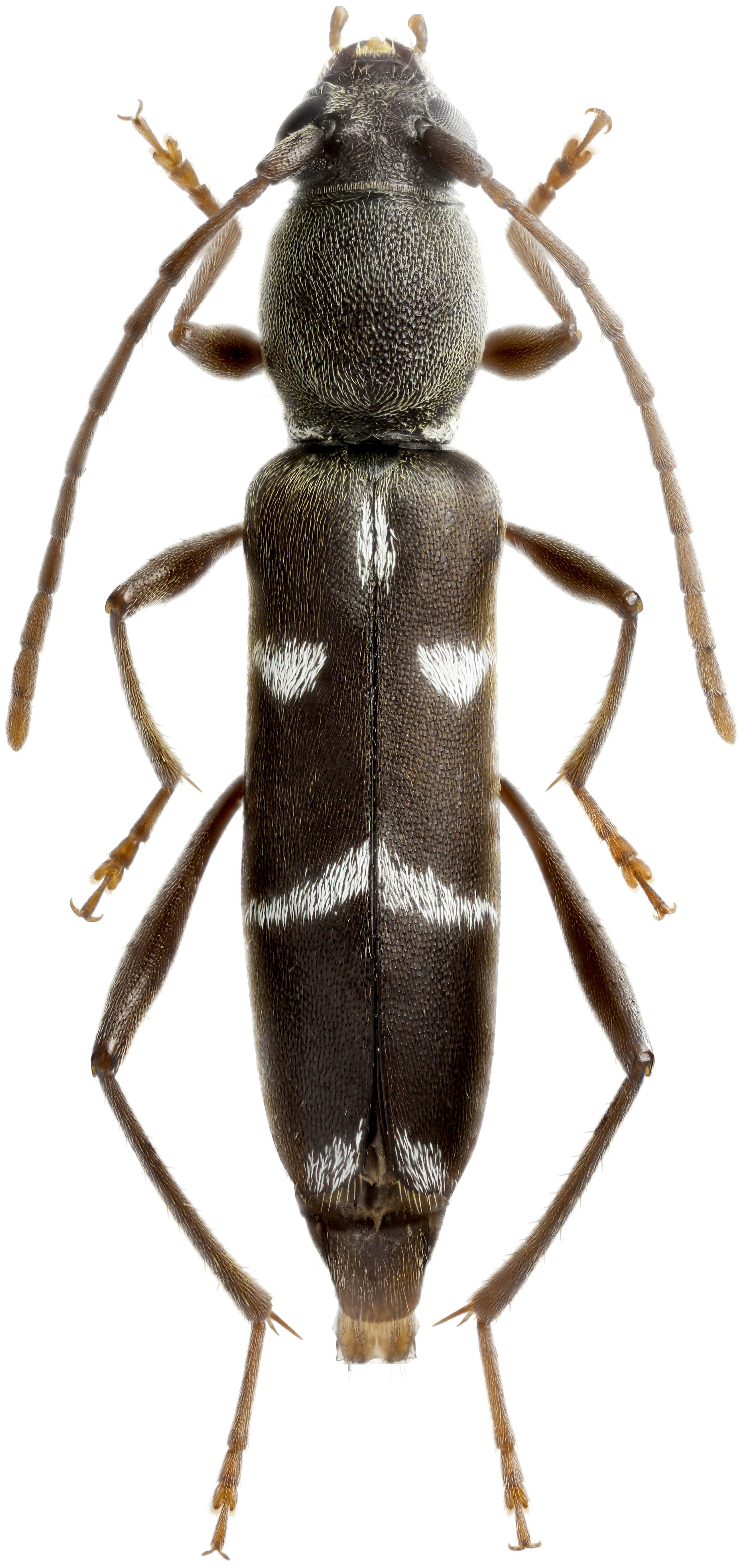Rhaphuma diminuta (Bates, 1873)
ssp. diminuta (Bates, 1873)
[= Chlorophorus diminutus (Bates, 1873)]
Subfamilia: CERAMBYCINAE / Tribus: CLYTINI
ssp. diminuta (Bates, 1873)
[= Chlorophorus diminutus (Bates, 1873)]
Subfamilia: CERAMBYCINAE / Tribus: CLYTINI

[Photo © Kirill V. Makarov, click on the picture for 4K resolution] |
Rhaphuma diminuta diminuta, a nominotypic subspecies occuring in Russia (Far East), Japan and Korea, has been described from Japan (Nagasaki environs) as Clytanthus diminutus by Henry Walter Bates in 1873 [❖]. The species, inhabiting deciduous forests of Far East, is ecologically associated with deciduous trees and strubs. Its larvae develop in dead or dying twigs/shoots (up to diameter 1.5 cm), feed subcortically creating deeply impressed galleries in sapwood and fill them compactly by frass. Mature larvae penetrate the wood forming a pupal cell with an exit corridor clogged with sawdust. Pupation in the end of summer, beetles hatch in August-September and overwinter in the wood (life-cycle 2 years). Adults, active from May to July (peak in June), are diurnal and anthophilous [✧]. |
| Subfamilia | Cerambycinae Latreille, 1802 |
| Tribus | Clytini Mulsant, 1839 |
| Genus | Rhaphuma Pascoe, 1858 |
| Species | Rhaphuma diminuta (Bates, 1873) |
| Species | Rhaphuma diminuta diminuta (Bates, 1873) |

